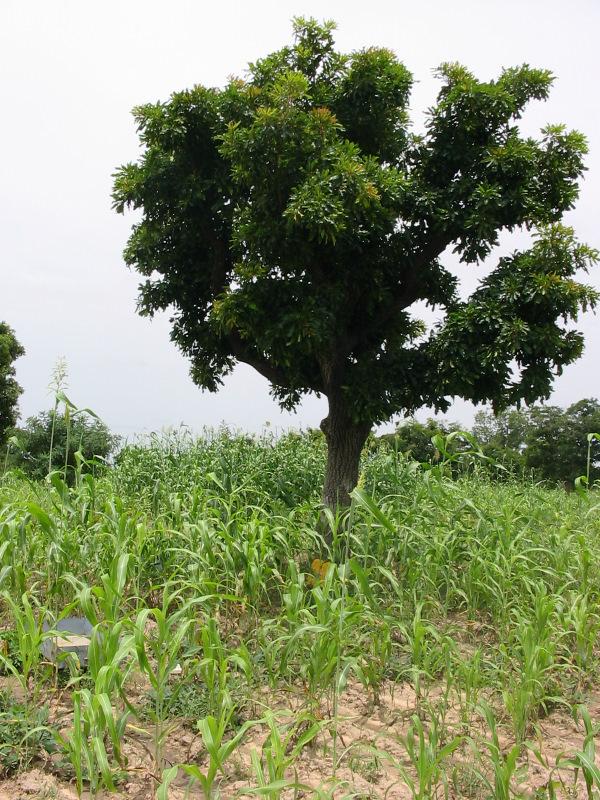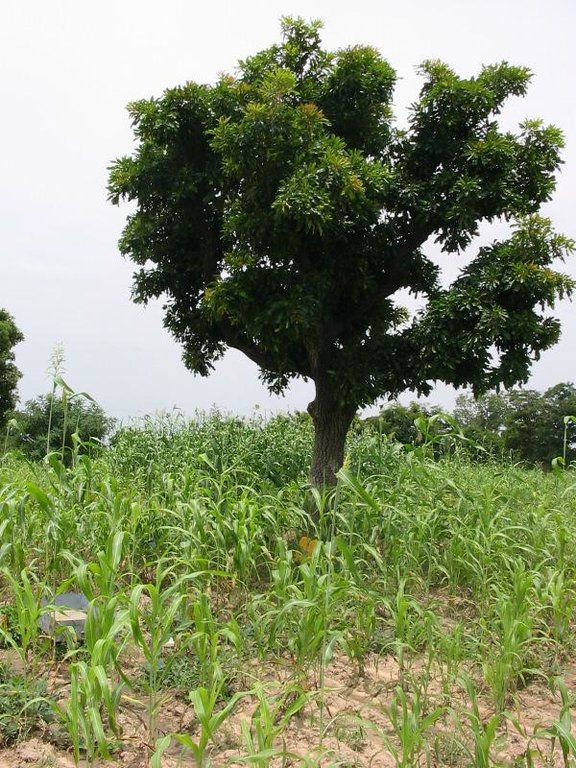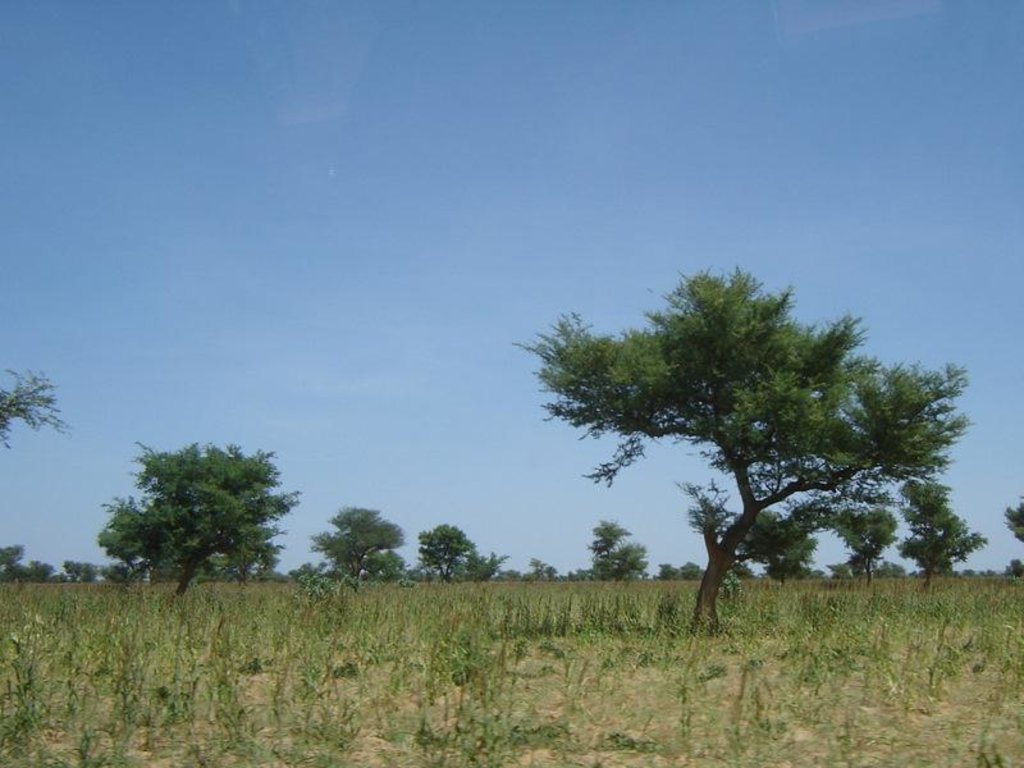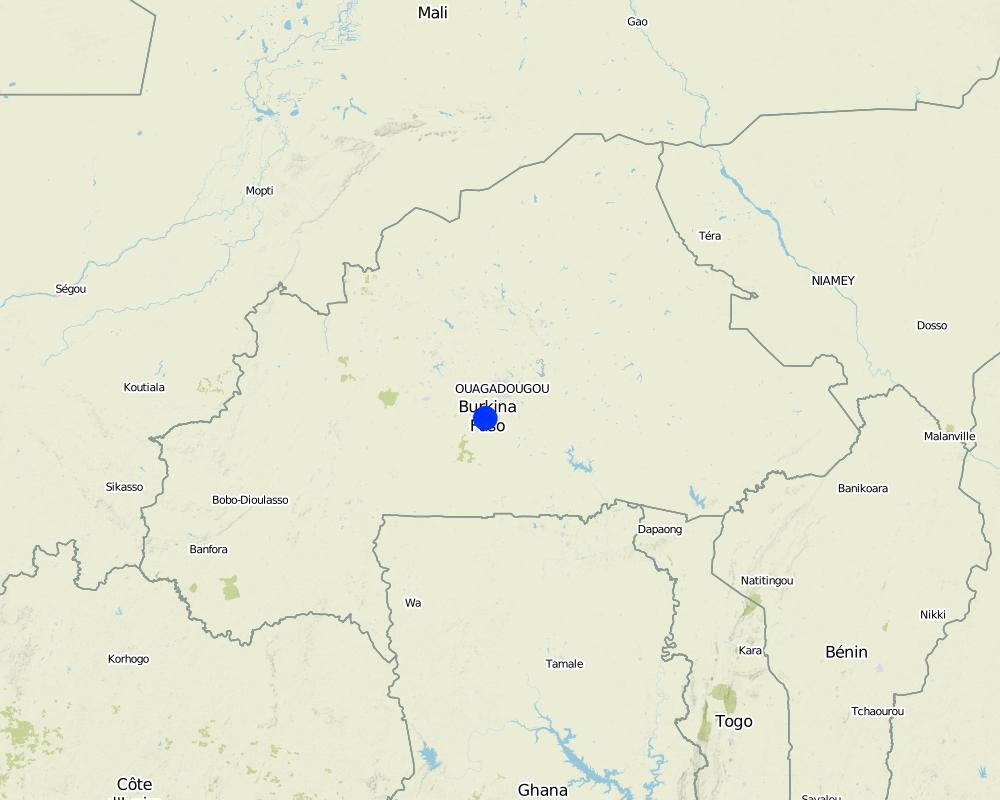Parkland Agroforestry System [بوركينا فاسو]
- تاريخ الإنشاء:
- تحديث:
- جامع المعلومات: Unknown User
- المحرر: –
- المراجعون: Fabian Ottiger, Alexandra Gavilano
technologies_1345 - بوركينا فاسو
عرض الأقسام
توسيع الكل طي الكل1. معلومات عامة
1.2 تفاصيل الاتصال بالأشخاص الرئيسيين لمصدر المعلومات والمؤسسات المشاركة في تقييم وتوثيق التقنية
الشخص (الأشخاص) الرئيسي لمصدر المعلومات
متخصص في الإدارة المستدامة للأراضي:
Bayala Jules
Conseil ouest et centre africain pour la recherche et le développement agricoles (CORAF)
بوركينا فاسو
اسم المشروع الذي سهّل توثيق/تقييم التقنية (إذا كان ذلك على صلة)
Book project: SLM in Practice - Guidelines and Best Practices for Sub-Saharan Africa (SLM in Practice)اسم المؤسسة (المؤسسات) التي سهلت توثيق/تقييم التقنية (إذا كان ذلك على صلة)
West and Central African Council for Agricultural Research and Development (WECARD/CORAF) - السنغال1.3 الشروط المتعلقة باستخدام البيانات الموثقة من خلال WOCAT
يوافق جامع المعلومات والشخص (لاشخاص) الرئيسي لمصدر المعلومات على الشروط المتعلقة باستخدام البيانات الموثقة من خلال WOCAT:
نعم
2. وصف تقنيةالإدارة المستدامي للأراضي
2.1 وصف مختصر للتقنية
تعريف التقنية:
Parklands are the traditional agroforestry systems of semi-arid West Africa or Sahel where naturally growing, valuable trees are protected and nurtured on cropping and grazing lands
2.2 وصف تفصيلي للتقنية
الوصف:
For the rural people in the Sahel, parkland trees are multipurpose: they are a grocery shop, a pharmacy and a silo at the same time. People rely on many locally cherished species to provide food and nutritional security for both human and livestock populations and to protect and enrich soils. Important tree species are baobab (Adansonia digitata), tamarind (Tamarindus indica), Faidherbia albida, shea nut or karité (Vitellaria paradoxa, see photo 1 below) and néré (Parkia biglobosa). Crop production can be increased below and around the trees (especially under Faidherbida albida) due to the favourable micro-climate, accumulation of soil organic matter through litter fall, prunings and root decay in the predominantly sandy and poor soils.
Parkland management practices include: assisted tree regeneration (see Assisted Natural Regeneration, Burkina Faso; and FMNR, Niger); Tree planting (mostly in vicinity of family compounds); Improved fallows (under which economically useful and fertility-improving trees are planted before cropping is discontinued) and fire protection. Farmers commonly apply silvicultural techniques to increase production of parkland trees. These include seedling protection and fencing, watering, and the selection of vigorous shoots. Pruning is done to improve productivity of trees, reduce shade and enhance understorey crop performance and to produce fuelwood and fodder. It stimulates leaf regrowth, causes an additional foliation peak during the rainy season and depresses pod production. Coppicing and pollarding represent a way of limiting competition with intercrops and providing wood and other tree products in species with good vegetative growth.
2.3 صور التقنية
2.5 البلد/المنطقة/المواقع التي تم تنفيذ التقنية فيها والتي يغطيها هذا التقييم
البلد:
بوركينا فاسو
مزيد من التفاصيل حول الموقع:
Saponé
Map
×2.6 تاريخ التنفيذ
في حالة عدم معرفة السنة بالتحديد، يرجى الإشارة إلى التاريخ التقريبي:
- منذ أكثر من 50 عامًا (تقليدي)
2.7 إدخال التقنية
حدد كيف تم إدخال التقنية:
- كجزء من النظام التقليدي (> 50 عامًا)
3. تصنيف تقنية الإدارة المستدامي للأراضي
3.1 الغرض الرئيسي ( الأغراض الرئيسية) للتقنية
- تحسين الإنتاج
- الحد من تدهور الأراضي ومنعه وعكسه
- الحفاظ على النظام البيئي
- الحد من مخاطر الكوارث
- خلق أثر اقتصادي مفيد
- خلق أثر اجتماعي مفيد
3.2 نوع (أنواع) استخدام الأراضي الحالية حيث يتم تطبيق التقنية
استخدامات الأراضي مختلطة ضمن نفس وحدة الأرض:
نعم
حدد استخدام الأراضي المختلطة (المحاصيل / الرعي / الأشجار):
- الحراجة الزراعية

الأراضي الزراعية
- زراعة سنوية
- زراعة الأشجار والشجيرات
الزراعة السنوية - حدد المحاصيل:
- الحبوب - الدخن
عدد مواسم الزراعة في السنة:
- 1
حدد:
Longest growing period in days: 120

الغابات/ الأراضي الحرجية
- زراعة الأشجار، التشجير
زراعة الأشجار والتشجير: تحديد أصل وتكوين الأنواع:
- أصناف مختلطة
- Faidherbia albida, Tamarindus indica, Vitellaria paradoxa, Parkia biglobosa, Adansonia digitata
منتجات وخدمات:
- حطب الوقود
- الفواكه والمكسرات
- حفظ/حماية الطبيعة
- الحماية من المخاطر الطبيعية
- crop production below trees (microclimate)
التعليقات:
Major land use problems (compiler’s opinion): Desertification, decline of soil organic matter and fertility, soil loss through water erosion
3.4 إمدادات المياه
إمدادات المياه للأرض التي يتم تنفيذ التقنية عليها:
- بعلية
3.5 مجموعةالإدارة المستدامة للأراضي التي تنتمي إليها هذه التقنية
- الحراجة الزراعية
- أنظمة التناوب (تعاقب المحاصيل، البور، الزراعة المتنقلة)
- الإدارة المتكاملة لخصوبة التربة
3.6 التدابير التقنية في مجال إلادارة المستدامة للأراضي

التدابير النباتية
- V1: غطاء من الأشجار والشجيرات
التعليقات:
Main measures: vegetative measures
Type of vegetative measures: scattered / dispersed
3.7 الأنواع الرئيسية من تدهور الأراضي التي تناولتها التقنية

تآكل التربة بالمياه
- الوزن(Wt): فقدان التربة السطحية/تآكل السطح

تآكل التربة الناتج عن الرياح
- (Et): فقدان التربة السطحية

التدهور الكيميائي للتربة
- (Cn): تراجع الخصوبة وانخفاض محتوى المادة العضوية (غير ناتج عن الانجراف)

التدهور البيولوجي
- (Bc): تناقص الغطاء النباتي
- (Bq): انخفاض الكمية/الكتلة الحيوية
- (Bs): انخفاض جودة وتركيبة الأنواع/التنوع

تدهور المياه
- (Ha): التجفيف
التعليقات:
Main type of degradation addressed: Wt: loss of topsoil / surface erosion, Et: loss of topsoil, Cn: fertility decline and reduced organic matter content, Bc: reduction of vegetation cover, Bs: quality and species composition /diversity decline
Secondary types of degradation addressed: Bq: quantity / biomass decline, Ha: aridification
3.8 منع أو حد أو عكس تدهور الأراضي
تحديد هدف التقنية فيما يتعلق بتدهور الأراضي:
- الحد من تدهور الأراضي
4. المواصفات الفنية، وأنشطة التنفيذ، والمدخلات، والتكاليف
4.1 الرسم الفني للتقنية
المواصفات الفنية (المتعلقة بالرسم الفني):
Technical knowledge required for field staff / advisors: moderate
Technical knowledge required for land users: low
Main technical functions: control of raindrop splash, increase in organic matter, increase in nutrient availability (supply, recycling,…), reduction in wind speed, promotion of vegetation species and varieties (quality, eg palatable fodder)
Secondary technical functions: stabilisation of soil (eg by tree roots against land slides), increase of infiltration, increase of biomass (quantity)
Scattered / dispersed
Vegetative material: T : trees / shrubs
Trees/ shrubs species: Faidherbia albida, Tamarindus indica, Vitellaria paradoxa, Parkia biglobosa, Adansonia digitata
4.3 أنشطة التأسيس
| النشاط | التوقيت (الموسم) | |
|---|---|---|
| 1. | Retaining saplings from natural regeneration or wildings | before rainy seasons |
| 2. | Planting improved material (early stage) | |
| 3. | Grafting for shortening juvenile phase and improving fruit quality (initiation stage) | |
| 4. | Pruning to form erect canopy | |
| 5. | Protection from animals by dead or live fences |
4.5 الصيانة/الأنشطة المتكررة
| النشاط | التوقيت/الوتيرة | |
|---|---|---|
| 1. | Weeding around seedlings when necessary | rainy season |
| 2. | Pruning as necessary (pruned branches are dried and used for fuelwood): annually | |
| 3. | Pollarding (pruning of side branches to improve light for understorey crops | |
| 4. | Felling some trees to reduce density as they grow bigger (during dry season) |
4.6 التكاليف والمدخلات اللازمة للصيانة/للأنشطة المتكررة (سنويًا)
التعليقات:
Machinery/ tools: All activities carried out by manual labour using machetes (panga) or hoes
Data on costs is not available. However, costs for management of the land use system are low; only some pruning and trimming of trees is needed which is effectively ‘harvesting’ of fodder and wood.
4.7 أهم العوامل المؤثرة على التكاليف
قدم وصفا لأهم العوامل التي تؤثر على التكاليف:
Data on costs is not available. However, costs for management of the land use system are low; only some pruning and trimming of trees is needed which is effectively ‘harvesting’ of fodder and wood.
5. البيئة الطبيعية والبشرية
5.1 المناخ
هطول الأمطار السنوي
- < 250 مم
- 251- 500 ملم
- 501 - 750ملم
- 1,000-751 ملم
- 1,500-1,100 ملم
- 2,000-1,500 ملم
- 3,000-2,001 ملم
- 4,000-3,100 ملم
- > 4000 ملم
المواصفات/التعليقات على هطول الأمطار:
Unimodal
المنطقة المناخية الزراعية
- شبه قاحلة
Thermal climate class: tropics
5.2 طوبوغرافيا
متوسط الانحدارات:
- مسطح (0-2%)
- بسيط (3-5%)
- معتدل (6-10%)
- متدحرج (11-15%)
- تلال (16-30%)
- شديدة الانحدار(31-60%)
- فائقة الانحدار (>60%)
التضاريس:
- هضاب/سهول
- أثلام مرتفعة
- المنحدرات الجبلية
- منحدرات التلال
- منحدرات في السفوح
- قاع الوادي
المنطقة الارتفاعية:
- 100-0 متر فوق سطح البحر
- 500-101 متر فوق سطح البحر
- 1,000-501 متر فوق سطح البحر
- 1,500-1,001 متر فوق سطح البحر
- 2,000-1,501 متر فوق سطح البحر
- 2,500-2,100 متر فوق سطح البحر
- 3,000-2,501 متر فوق سطح البحر
- 4,000-3,001 متر فوق سطح البحر
- > 4000 متر فوق سطح البحر
التعليقات والمواصفات الإضافية بشأن التضاريس:
Altitudinal zone: 101-500 m a.s.l. (Saponé)
5.3 التربة
متوسط عمق التربة:
- ضحل جدًا (0-20 سم)
- ضحلة (21-50 سم)
- متوسطة العمق (51-80 سم)
- عميقة (81-120 سم)
- عميقة جدًا (> 120 سم)
قوام التربة (التربة السطحية):
- خشن / خفيف (رملي)
- متوسط ( طميي، سلتي)
المواد العضوية في التربة السطحية:
- منخفضة (<1%)
5.6 خصائص مستخدمي الأراضي الذين يطبقون التقنية
التوجه السوقي لنظام الإنتاج:
- مختلط (كفاف/ تجاري)
أفراداً أو مجموعات:
- فرد/أسرة معيشية
مستوى المكننة:
- عمل يدوي
اذكر الخصائص الأخرى ذات الصلة لمستخدمي الأراضي:
Difference in the involvement of women and men: poor and better-off farmers (basically everyone who has land)
Population density: 50-100 persons/km2
5.7 متوسط مساحة الأرض التي يستخدمها مستخدمو الأراضي الذين يطبقون التقنية
- < 0.5 هكتارا
- 0.5 - 1 هكتار
- 1 -2 هكتار
- 2 - 5 هكتار
- 5 - 15 هكتار
- 15 - 50 هكتار
- 50 - 100هكتار
- 500-100 هكتار
- 1,000-500 هكتار
- 10,000-1,000 هكتار
- > 10,000 هكتار
5.8 ملكية الأراضي، وحقوق استخدام الأراضي، وحقوق استخدام المياه
حقوق استخدام الأراضي:
- فردي
التعليقات:
majority has ownership of the land, few borrow
6. الآثار والتصريحات الختامية
6.1 الآثار التي أظهرتها التقنية في الموقع
الآثار الاجتماعية والاقتصادية
الإنتاج
إنتاج المحاصيل
التعليقات/ حدد:
through mulching and nutrient pumping
إنتاج الأعلاف
التعليقات/ حدد:
leaves used as fodder during dry season
الدخل والتكاليف
دخل المزرعة
آثار اجتماعية واقتصادية أخرى
Fruit production
الآثار الاجتماعية والثقافية
المؤسسات الوطنية
التعليقات/ حدد:
stakeholder interaction
Housing
التعليقات/ حدد:
More timber available
الآثار الايكولوجية
التربة
رطوبة التربة
التعليقات/ حدد:
mulching improves infiltration
غطاء التربة
التعليقات/ حدد:
mulch and canopy cover
فقدان التربة
دورة المغذيات/إعادة الشحن
التعليقات/ حدد:
leaf litter and nutrient recycling
التنوع البيولوجي: الغطاء النباتي، الحيوانات
التنوع النباتي
التنوع الحيواني
التعليقات/ حدد:
bees, birds, etc
الحد من مخاطر المناخ والكوارث
سرعة الرياح
التعليقات/ حدد:
affecting crops / homesteads
المناخ الموضعي (مايكرو)
6.2 الآثار التي أظهرتها التقنية خارج الموقع
تدفقات مائية موثوقة ومستقرة في موسم الجفاف
الفيضان في اتجاه مجرى النهر
تراكم الطمي باتجاه مصب النهر
Deforestation
التعليقات/ حدد:
Alternative source of fuel and timber
Employment
التعليقات/ حدد:
Tree management and harvesting
6.3 تعرض التقنية وحساسيتها لتغير المناخ التدريجي والظواهر المتطرفة/الكوارث المرتبطة بالمناخ (كما يراها مستخدمو الأراضي)
التعليقات:
Increased tolerance through the use of indigenous species
6.4 تحليل التكلفة والعائد
كيف يمكن مقارنة العوائد نسبة لتكاليف الإنشاء (من وجهة نظر مستخدمي الأراضي)؟
عوائد قصيرة الأجل:
إيجابي قليلا
عوائد طويلة الأجل:
ايجابي جدا
كيف تتم مقارنة العوائدمع كلفة الصيانة/التكاليف المتكررة (من وجهة نظر مستخدمي الأراضي)؟
عوائد قصيرة الأجل:
إيجابي قليلا
عوائد طويلة الأجل:
ايجابي جدا
6.5 اعتماد التقنية
إذا كان متاحًا، قم بتحديد الكمية (عدد الأسر المعيشية و/أو المساحةالمغطاة):
100% of the area covered
من بين جميع الذين تبنوا التقنية، كم عدد الذين فعلوا ذلك بشكل تلقائي، أي دون تلقي أي حوافز مادية/مدفوعات؟:
- 91-100%
التعليقات:
100% of land user families have adopted the Technology without any external material support
Comments on spontaneous adoption: 10s of millions of people live in the traditional parklands of Burkina Faso, Mali, Senegal and Niger. In Mali alone an estimated 3.6 million people practice parkland agroforestry with 40 trees per hectare.
6.7 نقاط القوة / المزايا / الفرص التي توفرها التقنية
| نقاط القوة/ المزايا/ الفرص من وجهة نظر جامع المعلومات أو غيره من الاشخاص الرئيسيين لمصدر المعلومات |
|---|
| Generation of several ecological benefits |
| Wood provision for rural as well as urban population |
| Increased food security thanks to fruit production |
6.8 نقاط ضعف / مساوىء / مخاطر التقنية وسبل التغلب عليها
| نقاط الضعف/ المساوىء/ المخاطر من وجهة نظر مستخدم الأراضي | كيف يمكن التغلب عليها؟ |
|---|---|
| Seedlings and wildings not always readily available | encourage local seed collection and setting up of group tree nurseries |
| Livestock sometimes damage the young seedlings | protection by fencing |
| Dry periods result in low seedling survival rates: planting not possible in dry areas | combine technology with fencing |
| Competition with crops | regular pruning of side branches |
| Long period to fruiting | use vegetative propagation of superior trees |
7. المراجع والروابط
7.2 المراجع للمنشورات المتاحة
العنوان، المؤلف، السنة، النظام القياسي الدولي لترقيم الكتب ISBN:
Jonsson K, CK. Ong and JCW. Odongo. 1999. Influence of scattered nere and karite trees on microclimate, soil fertility and millet yield.
متاح من أين؟كم التكلفة؟:
Experimental Agriculture 35:39-53.
العنوان، المؤلف، السنة، النظام القياسي الدولي لترقيم الكتب ISBN:
Bayala J., J. Balesdent, C. Marol, F. Zapata, Z. Teklehaimanot, SJ. Quedrago. 2006. Relative contribution of trees and crops to soil carbon content in a parkland system in Burkina Faso using natural 13C abundance.
متاح من أين؟كم التكلفة؟:
Nutrient Cycling in Agroecosystems 76:193-201.
7.3 روابط للمعلومات ذات الصلة على الإنترنت
العنوان/الوصف:
Boffa, J.M. 1999. Agroforestry parklands in Sub-Saharan Africa. FAO Conservation guide no.34, Rome, 230pp
عنوان الرابط URL:
http://www.fao.org/docrep/005/x3940e/X3940E00.htm#TOC
الروابط والوحدات المواضيعية
توسيع الكل طي الكلالروابط
لا يوجد روابط
الوحدات المواضيعية
لا يوجد وحدات مواضيعية





